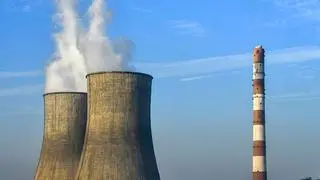Brent crude slipped below $72 a barrel on Tuesday, giving up some of the gains seen on Monday, when the prices rallied for the first time in six sessions and closed up more than 3 per cent.
Oil futures on both sides of the Atlantic have plunged close to 40 per cent over the past five months, also their longest string of monthly losses since the 2008 global financial crisis, as supply growth led by the US shale oil boom exceeded demand.
A decision by the Organization of the Petroleum Exporting Countries to maintain output has further pummelled prices.
Brent crude dipped 64 cents to $71.90 a barrel by 0327 GMT. US crude fell 57 cents to $68.43 a barrel.
“Saudi Arabia and OPEC no longer have the mechanism to balance markets from the supply side,’’ said Mark Keenan, head of commodities research Asia at Societe Generale.
“Markets will have to balance themselves. As they learn how to do that, volatility will be very elevated.’’
Both contracts touched five-year lows on Monday before surging to post their first gain in about one week.
“Yesterday much of the move higher right across the entire commodity complex ... suggests that there was a strong element of people increasing their allocation to commodities, taking advantage of these low prices,’’ Keenan said.
Investors’ portfolio adjustments are usually done at the start of the month, he added.
Falling crude prices are an unprecedented test for the producers of unconventional oil, head of the International Energy Agency (IEA) told Reuters on Monday.
“Breakeven varies from block to block,’’ IEA Executive Director Maria van der Hoeven said in an interview. “Light tight oil producers in the US, Canadian oil sands are achieving impressive cost savings. We have to wait and see.’’
As crude prices tumble, offshore drillers globally are increasingly considering “warm stacking’’ their rigs to take them temporarily off the market.
Norway’s Statoil has postponed a decision to invest 40 billion crowns in a mature field.
US oil producers have been racing full-speed ahead to drill new shale wells in recent years, even in the face of lower oil prices. But new data suggests that the much-anticipated slowdown in shale country may have finally arrived.






Comments
Comments have to be in English, and in full sentences. They cannot be abusive or personal. Please abide by our community guidelines for posting your comments.
We have migrated to a new commenting platform. If you are already a registered user of TheHindu Businessline and logged in, you may continue to engage with our articles. If you do not have an account please register and login to post comments. Users can access their older comments by logging into their accounts on Vuukle.